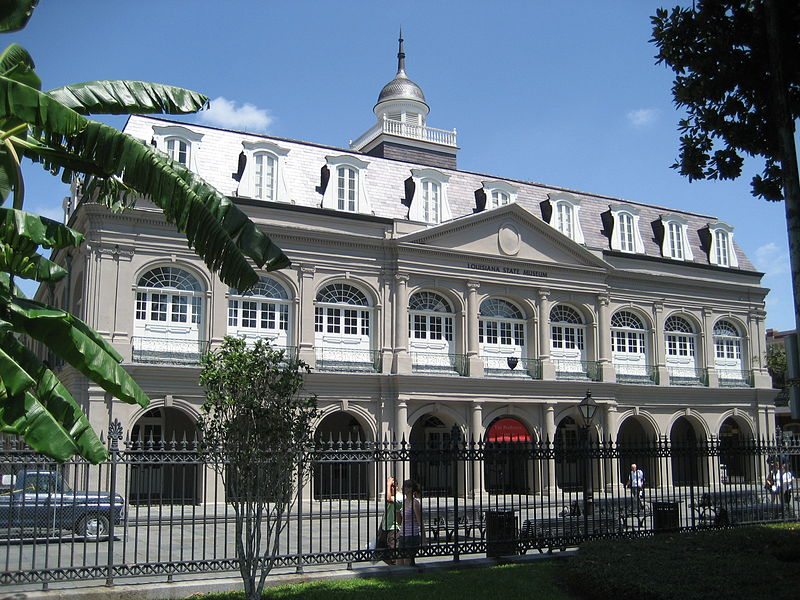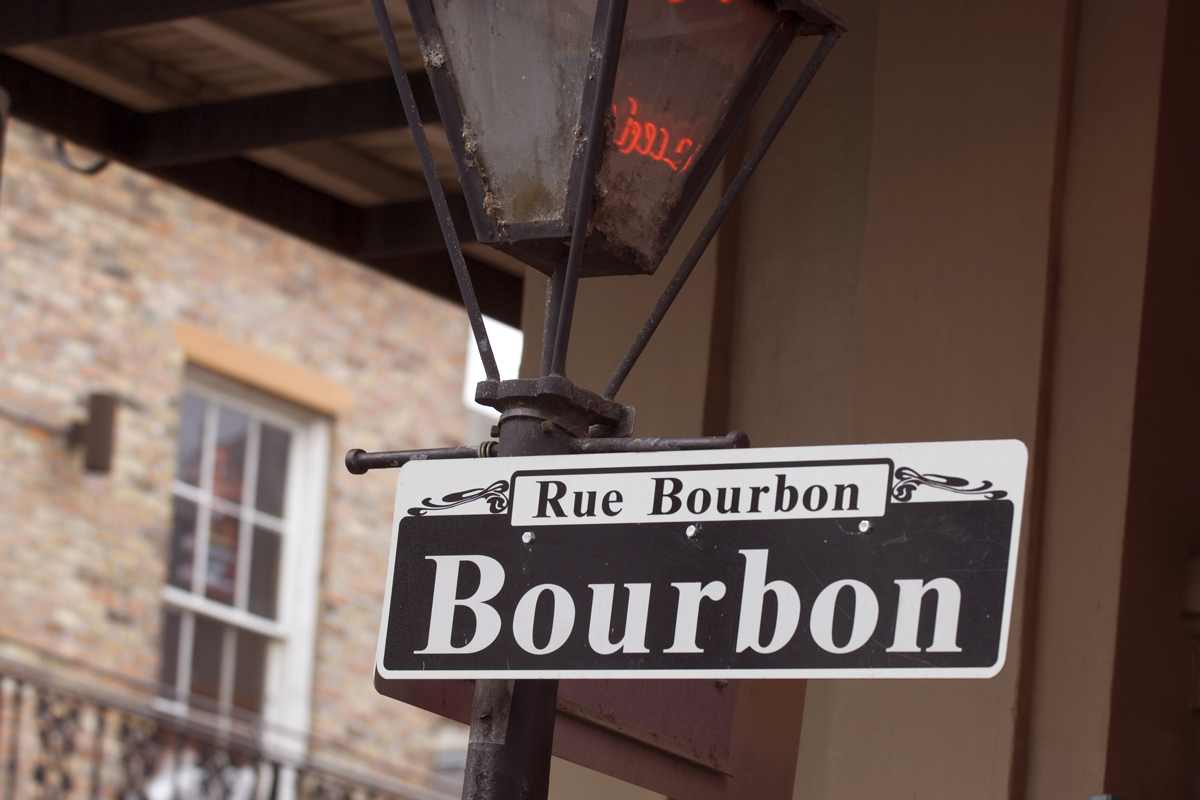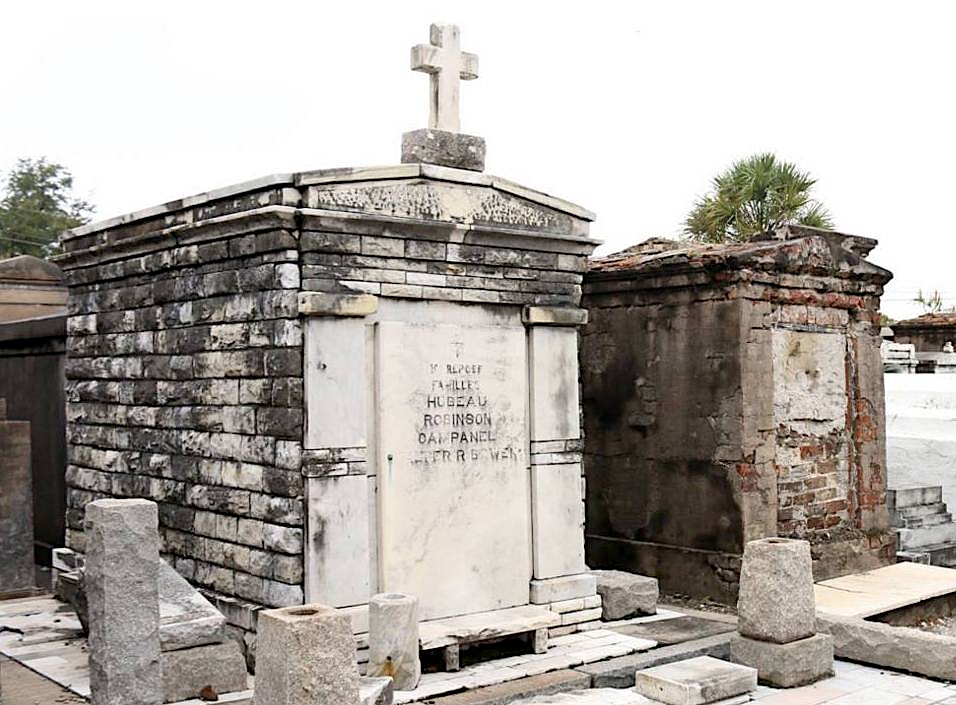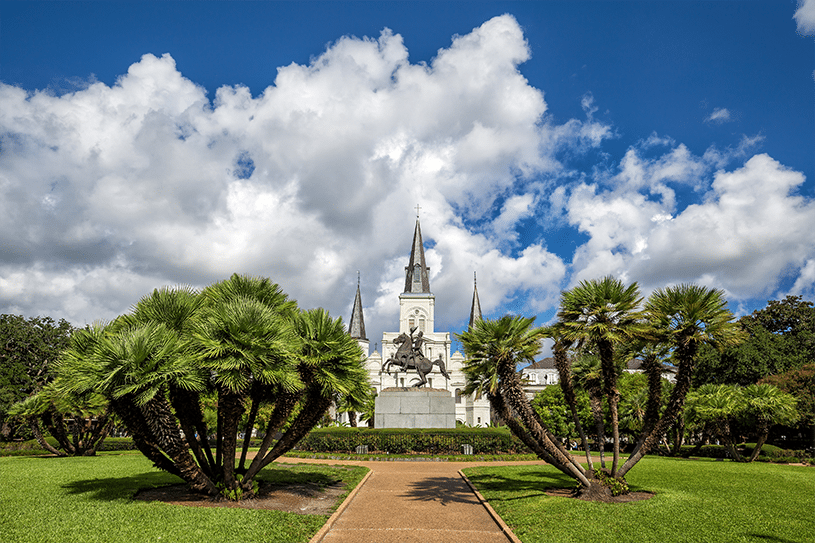Exploring St. Louis Cemetery No. 1

Photo courtesy of Cemetery Tour New Orleans at Basin St. Station on Facebook
Former New Orleanian William Faulker famously wrote, “The past isn’t dead and buried. It’s not even past.” Nowhere is this truth more evident than in St. Louis Cemetery No. 1. In this storied “city of the dead,” elaborate, crumbling above-ground graves hint at the stories of the larger-than-life personalities entombed within. As is true for many places in New Orleans, the veil between past and present feels very thin here.
It’s no wonder St. Louis Cemetery attracts more than 100,000 visitors each year. Some come to see the final resting place for Voodoo Queen Marie Laveau, while others come to tend the graves of loved ones interred within (St. Louis Cemetery remains an active gravesite).
Still, others come to experience the city’s living history via a stroll through its oldest cemetery (St. Louis Cemetery was built in 1789). Regardless of your motivation, a trip to New Orleans wouldn’t be complete without visiting St. Louis Cemetery No. 1.
One caveat: Unlike most other New Orleans cemeteries, St. Louis Cemetery No. 1 is accessible only via the official, guided, licensed tour. That’s because the cemetery has been subject to much vandalism over the years. The tour tickets are $25 for adults and $18 for children.
Tickets are available here: https://cemeterytourneworleans.com/.

Photo courtesy of Cemetery Tour New Orleans at Basin St. Station on Facebook
Here are a few things to know and prominent gravesites to watch out for.
The History of the Cities of the Dead
Above-ground burials are just one of New Orleans’ idiosyncrasies, but they don’t exist solely for the sake of uniqueness. The city’s high water table makes in-ground burials impossible — a coffin buried underground simply floats back up to the top.
Once located at the marshy city limits, St. Louis Cemetery is now near the center of the city, thanks to the draining of the swamps, which permitted people to settle beyond the French Quarter.
One of the first things you’ll see when you enter St. Louis Cemetery No. 1 is a bank of “oven vaults” or “wall vaults” to your left. These tombs stack gravesites, filing cabinet style, one above the other. Glance at the ground, and you’ll see some graves are only partially visible — the rest are below the earth, evidence that New Orleans is gradually sinking.
Many oven vaults house the remains of countless family members. After a body is interred, it is left undisturbed in the grave for a period of one year and one day. At that point, the remains may be pushed to the back of the tomb, leaving room for another body to be interred. Other families prefer to collect the remains, placing them in a muslin bag.

“The future tomb of Nicolas Cage” – St. Louis Cemetery No. 1 by Nelo Hotsuma
The Cemetery’s Prominent Gravesites
If you wish to be buried in this famous graveyard, you can make it happen, but it will cost you. It’s not unreasonable though when you consider the people who will become your neighbors for eternity. They include…
Voodoo Queen Marie Laveau
Born in 1801 in the French Quarter to a Haitian mother and white father, Marie Laveau gained prominence as a Voodoo practitioner. The beautiful young woman was also a hairdresser to the wealthy, learning many beauty tricks and herbal remedies from her mother.
She was known for her caring and benevolent heart, as she nursed many people who suffered during the yellow fever epidemics of the 19th century. She saved countless lives, and to this day, people think of her with gratitude.
Many believe she continues to work her magic from beyond the grave. That’s why you’ll see faint triple XXXs etched into her grave — a practice that is actively discouraged — or trinkets such as bobby pins left in threes. (Bobby pins and hair clips are an homage to Laveau’s past work as a hairdresser.)
Homer Plessy
In June 1892, Homer Plessy challenged segregation laws when he refused to disembark from a “whites only” train car at nearby Press Street. (A train still runs on those tracks today.) Plessy was convicted of breaking the law, and the case moved to the Supreme Court.
In 1896, the “separate but equal” mandate was ruled constitutional, setting the stage for years of segregation and oppression. But the seeds of the civil rights movement also had been planted, thanks to Homer Plessy.
Nicolas Cage
No, he’s not dead yet. Nicolas Cage is 60 years old (in 2024) and seems to be in good health. However, he’s thinking about the future, which is one explanation for why he purchased a gleaming white, nine-foot pyramid inscribed with the Latin phrase “Omnia Ab Uno” (“All from One”).
The gravesite has baffled news outlets worldwide, whose reporters have come up with many different conspiracy theories. Among them: Cage is a closet Voodoo practitioner; Cage has Illuminati ties; Cage is an immortal who will entomb himself for a century before re-emerging; Cage has stored his wealth in the tomb.
Nobody really knows why he chose a tomb that’s so incongruous with its surroundings, but we do know it’s a very eye-catching construction, and that Cage evidently loves New Orleans.

Photo by Kathryn Valentino
What Else You Need to Know About Touring the Cemetery
Proper dress is crucial, especially if you are visiting in the summer. New Orleans’ hot, humid subtropical climate can get to anyone, so avoid overheating by dressing lightly, bringing water, and using sunscreen. Consider wearing a sun hat or bringing an umbrella. There’s little shade in the cemetery, and vaults block any possibility of a breeze.
Also, there’s no smoking or drinking alcohol during the tour. And, it should go without saying, don’t touch or desecrate the tombs.
However, photography is allowed, so snap away!
Are You Visiting New Orleans Soon?
We’d love for you to stay with us! And if you do, besides touring the cemetery, for easy, informative sightseeing, we recommend the City Sightseeing New Orleans city tour on the open-top, double-decker bus. It runs every 30 minutes through the Garden District, French Quarter, and CBD. You can hop on and off anytime!
Take advantage of The Brakeman Hotel specials, group rates, and best-rate guarantee for greater savings to spend on New Orleans’ famous cuisine and enjoy everything this magnificent city has to offer. Reserve your room today!

















